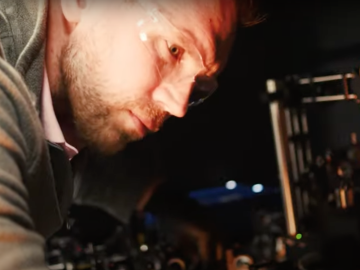
Filter News
Area of Research
- (-) Fusion and Fission (27)
- (-) Supercomputing (70)
- Advanced Manufacturing (2)
- Biology and Environment (31)
- Biology and Soft Matter (1)
- Computational Biology (1)
- Computer Science (2)
- Energy Science (23)
- Fusion Energy (6)
- Isotopes (17)
- Materials (39)
- Materials for Computing (6)
- National Security (14)
- Neutron Science (59)
- Nuclear Science and Technology (17)
- Quantum information Science (1)
News Topics
- (-) Computer Science (46)
- (-) Frontier (18)
- (-) Fusion (12)
- (-) Isotopes (1)
- (-) Materials Science (8)
- (-) Neutron Science (6)
- (-) Nuclear Energy (19)
- 3-D Printing/Advanced Manufacturing (4)
- Advanced Reactors (2)
- Artificial Intelligence (22)
- Big Data (16)
- Bioenergy (4)
- Biology (6)
- Biomedical (7)
- Biotechnology (1)
- Buildings (3)
- Chemical Sciences (3)
- Composites (1)
- Coronavirus (7)
- Cybersecurity (2)
- Education (1)
- Energy Storage (2)
- Environment (15)
- Exascale Computing (17)
- Grid (2)
- High-Performance Computing (26)
- ITER (2)
- Machine Learning (8)
- Materials (4)
- Mathematics (2)
- Microscopy (2)
- Nanotechnology (5)
- National Security (3)
- Partnerships (1)
- Physics (5)
- Quantum Computing (11)
- Quantum Science (11)
- Security (2)
- Simulation (14)
- Software (1)
- Space Exploration (1)
- Summit (22)
- Transportation (4)
Media Contacts

To achieve practical energy from fusion, extreme heat from the fusion system “blanket” component must be extracted safely and efficiently. ORNL fusion experts are exploring how tiny 3D-printed obstacles placed inside the narrow pipes of a custom-made cooling system could be a solution for removing heat from the blanket.

ORNL researchers used the nation’s fastest supercomputer to map the molecular vibrations of an important but little-studied uranium compound produced during the nuclear fuel cycle for results that could lead to a cleaner, safer world.

A team of researchers has developed a novel, machine learning–based technique to explore and identify relationships among medical concepts using electronic health record data across multiple healthcare providers.

A study led by researchers at ORNL could help make materials design as customizable as point-and-click.

Tackling the climate crisis and achieving an equitable clean energy future are among the biggest challenges of our time.

A study by researchers at the ORNL takes a fresh look at what could become the first step toward a new generation of solar batteries.

ORNL manages the Innovation Network for Fusion Energy Program, or INFUSE, with Princeton Plasma Physics Laboratory, to help the private sector find solutions to technical challenges that need to be resolved to make practical fusion energy a reality.

A rapidly emerging consensus in the scientific community predicts the future will be defined by humanity’s ability to exploit the laws of quantum mechanics.

A new version of the Energy Exascale Earth System Model, or E3SM, is two times faster than an earlier version released in 2018.

Neuromorphic devices — which emulate the decision-making processes of the human brain — show great promise for solving pressing scientific problems, but building physical systems to realize this potential presents researchers with a significant


